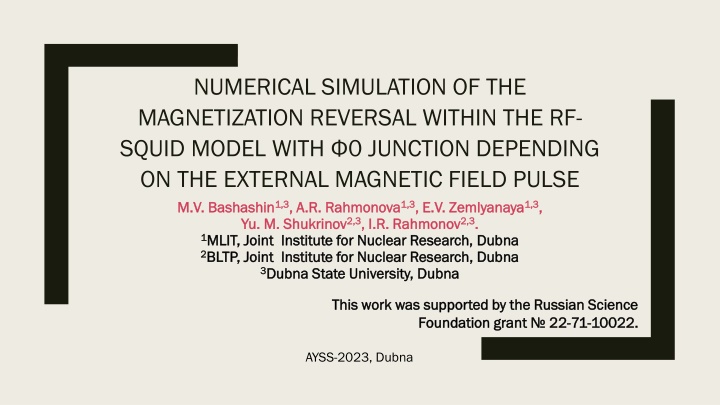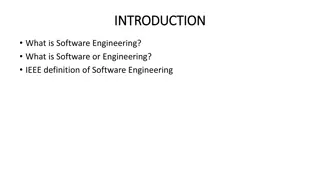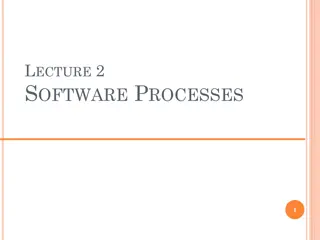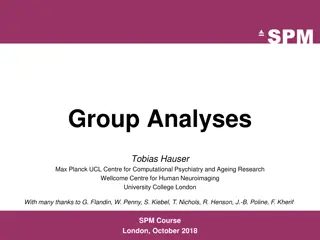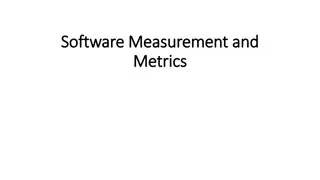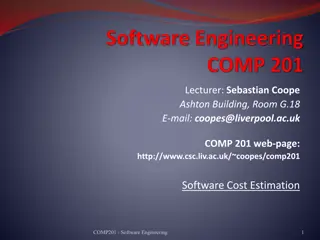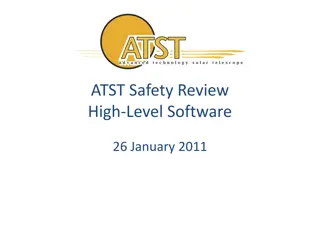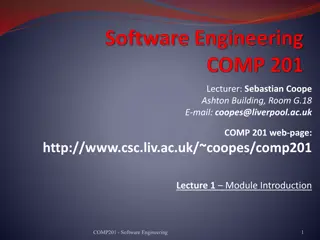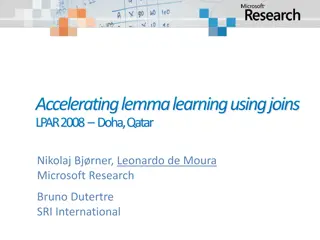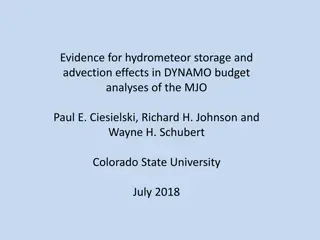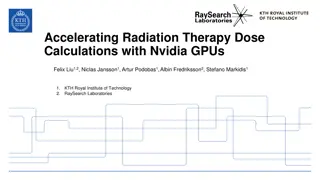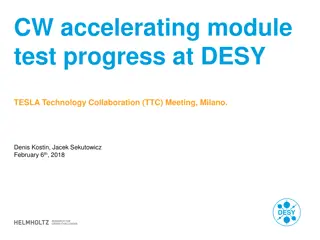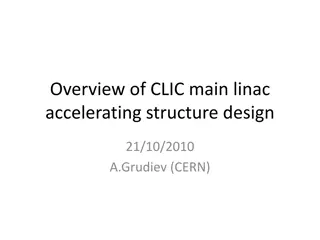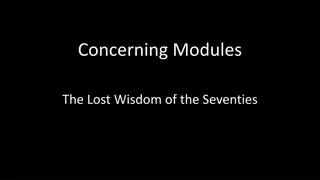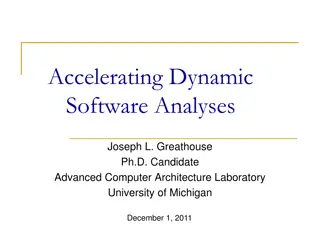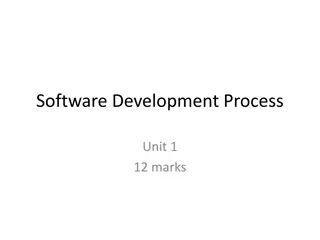Accelerating Dynamic Software Analyses
Software errors are a significant issue, costing billions annually. Explore modern bug threads, dynamic software analysis, runtime overheads, and dynamic dataflow analysis techniques.
Download Presentation

Please find below an Image/Link to download the presentation.
The content on the website is provided AS IS for your information and personal use only. It may not be sold, licensed, or shared on other websites without obtaining consent from the author.If you encounter any issues during the download, it is possible that the publisher has removed the file from their server.
You are allowed to download the files provided on this website for personal or commercial use, subject to the condition that they are used lawfully. All files are the property of their respective owners.
The content on the website is provided AS IS for your information and personal use only. It may not be sold, licensed, or shared on other websites without obtaining consent from the author.
E N D
Presentation Transcript
NUMERICAL SIMULATION OF THE MAGNETIZATION REVERSAL WITHIN THE RF- SQUID MODEL WITH 0 JUNCTION DEPENDING ON THE EXTERNAL MAGNETIC FIELD PULSE M.V. Bashashin M.V. Bashashin1,3 , A.R. Rahmonova1,3 Yu. M. Shukrinov Yu. M. Shukrinov2,3 , I.R. Rahmonov2,3 1 1MLIT, Joint Institute for Nuclear Research, MLIT, Joint Institute for Nuclear Research, Dubna 2 2BLTP, Joint Institute for Nuclear Research, BLTP, Joint Institute for Nuclear Research, Dubna 3 3Dubna State University, Dubna State University, Dubna 1,3, A.R. Rahmonova 1,3, E.V. Zemlyanaya , E.V. Zemlyanaya1,3 2,3, I.R. Rahmonov 1,3, , 2,3. . Dubna Dubna Dubna This work was supported by the Russian Science This work was supported by the Russian Science Foundation grant Foundation grant 22 22- -71 71- -10022. 10022. AYSS-2023, Dubna
Introduction Superconducting spintronics is one of the most intensively developing areas of condensed matter physics. An important place in this area is occupied by the study of Josephson junctions associated with magnetic systems. In the superconductor ferromagnetic superconductor (SFS) structures, the spin- orbit coupling in ferromagnetic layer without inversion symmetry provides a mechanism for a direct (linear) coupling between the magnetic moment and the superconducting current. Such Josephson junctions are called 0-junction. The possibility to control magnetization by the Josephson current and vice versa Josephson current by magnetization, has attracted much recent attention. In this research we have investigated the peculiarities of the MR under the pulse of external magnetic field in the single junction superconducting quantum interference device (SQUID) with 0-junction.
Introduction The magnetization reversal (MR) phenomena in SQUID with the single 0 junction attracts an attention today due to the possibility of controlling magnetism by superconductivity that opens a perspective of different applications in quantum and nano-electronic technologies. Using 4th order Runge-Kutta method for numerical solution of a respective system of differential equations, one can obtain a detailed pictures representing the intervals of the damping parameter, relation of Josephson to magnetic energy and spin-orbit coupling parameter where the full magnetization reversal occurs. Parallel implementation allows one to significantly accelerate the simulations in the wide range of parameters of model.
Theoretical model The dynamics of the magnetization M M described by the Landau-Lifshitz-Gilbert equation[1,2], with the corresponding effective magnetic field H Heff ?? ??= 1 + (??)2 ????= eff. ? ? ???? + ? ? ????? ?????2 (1) ?? ?0 ? ?0[??sin ? ? ??+?? ?0??] where F F is ferromagnetic resonance frequency, is Gilbert damping, K K is anisotropic constant, G=E G=EJ J / / K KV V, E EJ J is Josephson energy, V V is the volume of the ferromagnetic layer, r= orbit coupling parameter, M M0 0 is magnetization saturation. According to the SQUID theory and well known resistively shunted junction model expressions for total flux through the system can be written as r= l l (V (VSO SO / / V VSF SF) ) -spin 2? 0 ????? ? ?? ?? ?? ??+ ????? ? ??? = ? ???, (2) where 0 0=h/ L L is the inductance of the superconducting loop, and I I is the current through 0 0-junction, c c= = 2 2 I Ic cR/ R/ 0 0 . =h/2 2e e is the flux quanta, pulse pulse is the flux created by the external magnetic field pulse,
Theoretical model Coupled system of equations in normalized variables takes form ??= ??? ??= ??? ??= ??? ?? 1+?2???? ??????? ? ??? + ? ????????? ? ??? + ???? ?? 1+?2 ????+ ? ?? ?? ?? 1+?2??????? ? ??? + ? ????????? ? ??? + ???? 2 (3) 2 (4) 2 1 ??? ? ??? + ???? (5) 2 1 ?? ??=?????? ? + ??? sin ? ??? ? where mi is magnetization components (i i = = x, x, y, y, z z) normalised to M M0 0, F F is frequency of ferromagnetic resonance normalized to c c, pulse flux. Here L L is normalized to L L0 0= = 0 0/ /2 2 I Ic c and time to c c. The external flux pulse pulse rectangular form ??????? = ?, ? ?0 0 pulse=( =(2 2 / / 0 0) ) pulse pulse is normalized external magnetic pulse has ? 2,?0+ ? 2 ; . (6) otherwise where A A and t t are the pulse amplitude and width, respectively. The initial conditions for the LLG equation are the m mx x( (0 0)= )=0 0; m my y( (0 0)= )=0 0; m mz z( (0 0)= )=1 1; ( (0 0)= )=0 0.
Magnetic reversal takes the value - -1 1 for a given initial value of +1 Magnetic reversal is an effect when m mz z component of the magnetic field changes the sign and +1. We analyze effect of the SQUID inductance L L on MR. In figure the time dependence of the m mz z for values of the L L = 1, 2, 3, 4, 5 = 1, 2, 3, 4, 5 for the pulse parameters A=3 The numbers in figure show the value of corresponding L L. In case of L = 1 L = 1 there no reversal, at L = 2 realized and complete reversal realized at t = 500 At L = 3 L = 3 the fast MR is realized, i.e. already during the acting of pulse. In case of the L = 4 L = 4, like the case of L = 2 takes long time (about t = 400 t = 400). At L = 5 L = 5 again we can see that MR is not realized. A=3 and t t=6 =6. L = 2 MR is t = 500. L = 2, the MR The performed analysis allows us to conclude that MR has a periodic behavior by the changing of the value of SQUID inductance.
Parallel implementation For the numerical solution of the system of equations, 4th order Runge-Kutta method was used. The execution time of a serial C++ program of modeling magnetization reversal in the (G, G, )-plane is 53 minutes (using Intel compiler). The parallelization process is based on the distribution of the points of the (G G, )- plane between parallel threads. The values of G G, where the condition |m mz z(T Tmax file. Maximal speedup of MPI implementation is about 15.5 times. The same parallelization scheme was used in case of simulations at the other planes. Also, using a parallel implementation, the influence of the AVX-512 vector instructions built into the latest versions of Intel server processors was tested. These processors are available on the Govorun supercomputer. max)+1|< is satisfied, are saved in output structure and writing to the output
Parallel implementation Time of calculations depending on the number of MPI-processes. Red line: MPI realization with basic compiler options; Blue line: MPI realization with AVX-512 options, further speed up by 1.3-1.6 times. Calculations performed on Govorun supercomputer.
Magnetic reversal I Intervals ntervals of of complete - -stepsize stepsize = =0 0. .001 complete magnetization magnetization reversal 001 at at A As s= = 1 1. .5 5; ; r r = = 0 0. .1 1; ; t t0 0= =25 Left panel Left panel: : L L = 0.1. The simulations simulations have have been been performed At At each each pair pair of of values values of of parameters | |m mz z+ +1 1|< |< . . = =0.0001. reversal at at ( (G G, , ) )- -plane 25; ; t t= = 6 6; ; F F= = 1 1. . = 0.1. Central panel Central panel: : L L=2. performed in in the the time parameters the the magnetic plane. . The The results results are are obtained obtained with with G G- -stepsize stepsize G G= =0 0. .1 1, , =2. Right panel Right panel: : L L = 10. interval [ [0 0, ,T Tmax where T Tmax magnetic reversal reversal was = 10. 1000. . The time- -interval max] ] where was indicated max= =1000 indicated by by means means of of condition condition
Conclusions The influence of the inductance parameter on the width of magnetization reversal domains was revealed. Shown that an increase in the inductance parameter leads to an increase in the width of the MR bands. Using AVX-512 instructions allows us to further speed up the program by 1.3-1.6 times in comparison with the standard MPI-version. Maximal speedup of MPI + AVX-512 implementation is about 22 times compared to the single-thread calculation.
THANKS FOR ATTENTION
